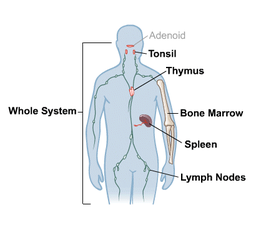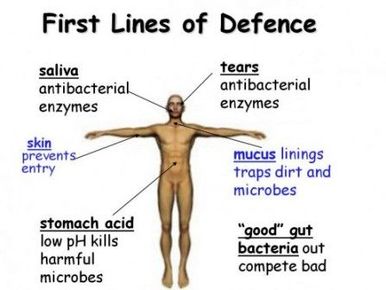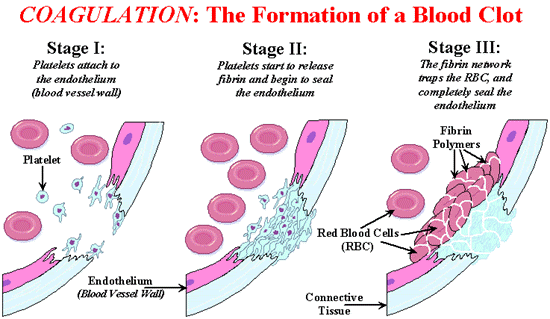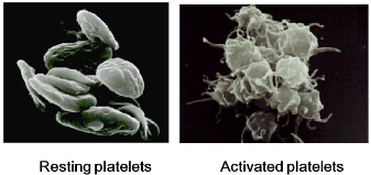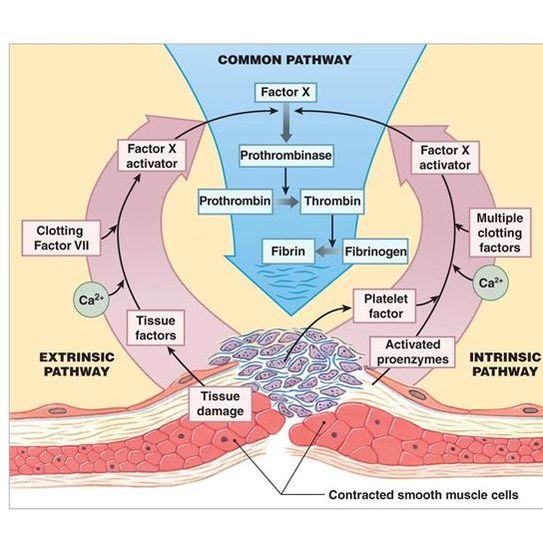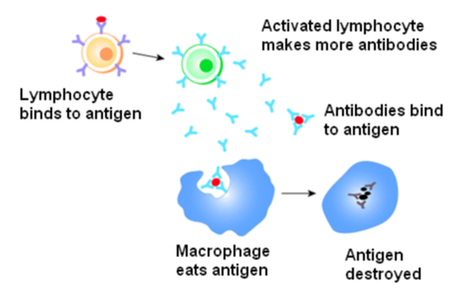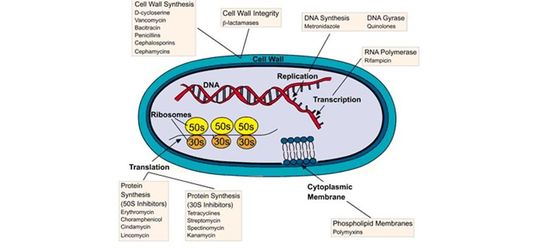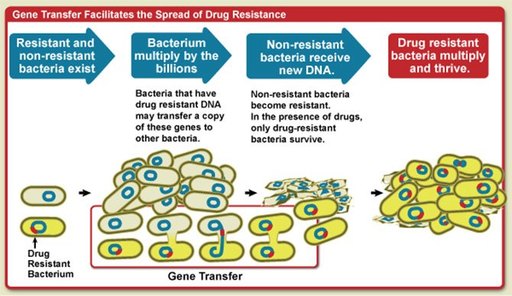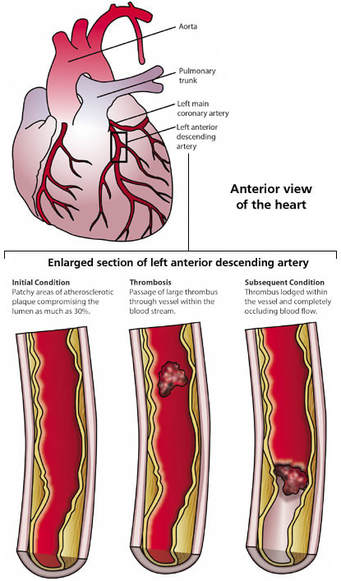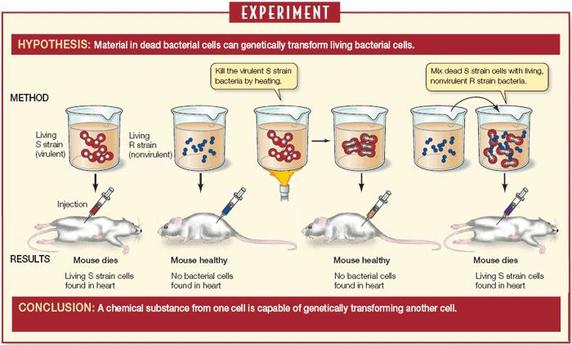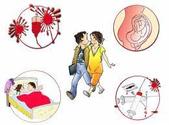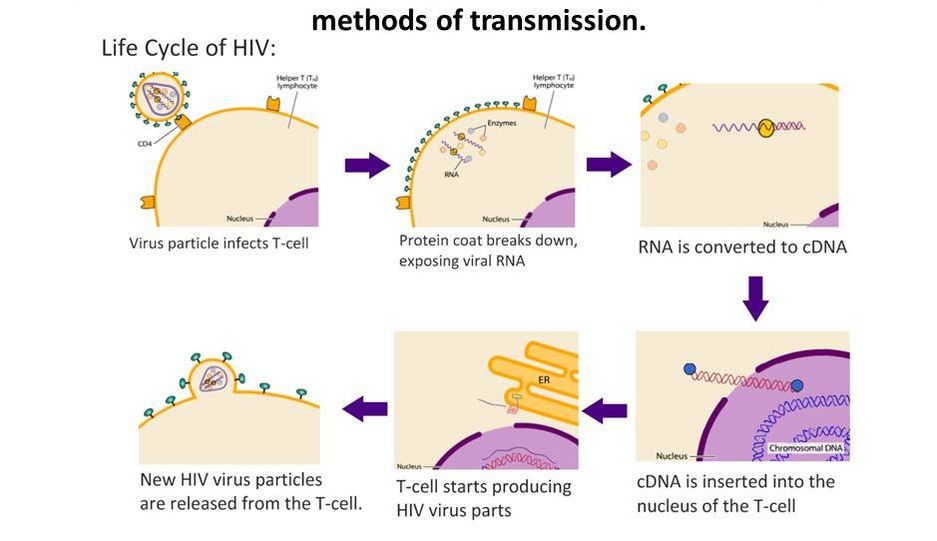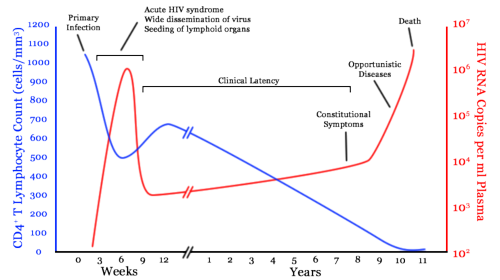- IB Style Question Banks with Solution
- IB DP Biology SL- IB Style Practice Questions with Answer-Topic Wise-Paper 1
- IB DP Biology HL- IB Style Practice Questions with Answer-Topic Wise-Paper 1
- IB DP Biology SL- IB Style Practice Questions with Answer-Topic Wise-Paper 2
- IB DP Biology HL- IB Style Practice Questions with Answer-Topic Wise-Paper 2
6.3 Defence Against Infectious Disease
Essential Idea:
The human body has structures and processes that resist the continuous threat of invasion by pathogens
Understandings:
- The skin and mucous membranes form a primary defence against pathogens that cause infectious disease
- Cuts in the skin are sealed by blood clotting
- Clotting factors are released from platelets
- The cascade results in the rapid conversion of fibrinogen to fibrin by thrombin
- Ingestion of pathogens by phagocytic white blood cells gives non-specific immunity to disease
- Production of antibodies by lymphocytes in response to particular pathogens gives specific immunity
- Antibiotics block processes that occur in prokaryotic cells but not in eukaryotic cells
- Viruses lack a metabolism and cannot therefore be treated with antibiotics
- Some strains of bacteria have evolved with genes that confer resistance to antibiotics and some strains of bacteria have multiple resistance
Applications:
- Causes and consequences of blood clot formation in coronary arteries
- Florey and Chain’s experiments to test penicillin on bacterial infections in mice
- Effects of HIV on the immune system and methods of transmission
- Define pathogen.
- State that skin and mucous membranes form the first line of defense against pathogens.
- Outline the role of skin, sebaceous glands and mucous membranes in the defense against pathogens.
- State two benefits of blood clotting when skin is cut.
- Outline two roles of platelets in the blood clotting cascade.
- Describe the blood clotting cascade, including the role of platelets, clotting factors, thrombin, fibrinogen and fibrin.
- State the white blood cells are the second line of defence against pathogens.
- Outline the function of phagocytic white blood cells in defense against pathogens.
- Define “specific immune response.”
- Contrast antigen and antibody.
- Describe the structure and function of antibodies.
- State the function of plasma cells and memory cells.
- Define antibiotic.
- Outline the mechanisms by which antibiotics kill bacteria.
- Explain why antibiotics are ineffective against viruses.
- Explain why antibiotics are ineffective against viruses.
- List five measures that can be taken to avoid the development of antibiotic resistance.
- Explain why multiple drug antibiotic resistance is especially dangerous.
- State an example of a multidrug resistant bacteria.
- State the function of the coronary arteries.
- Define coronary thrombosis.
- List sources of arterial damage that increase the risk of coronary thrombosis.
- List factors that are correlated with an increased risk of coronary thrombosis and heart attack.
- Describe the consequences of the HIV on the immune system.
- Outline the relationship between HIV and AIDS.
- List ways the HIV virus is spread.
- Explain methods and results of Florey and Chain’s experiments.
- Compare allowable research risks of the past with those of the present.
Topic 6.3: defense against infectious disease
In the Defense Against Infectious Disease unit we will learn that pathogens and viruses invade the body and cause diseases. Most pathogens are bacteria and viruses, but protozoan, parasite worms and fungi can also be pathogenic. You will also learn the mechanisms in which the body defends itself against these pathogens.
This unit will last 3 school days
Essential idea:
- The human body has structures and processes that resist the continuous threat of invasion by pathogens.
Nature of science:
- Risks associated with scientific research—Florey and Chain’s tests on the safety of penicillin would not be compliant with current protocol on testing. (4.8)
- Compare allowable research risks of the past with those of the present
6.3.U1 The skin and mucous membranes form a primary defence against pathogens that cause infectious disease.
- Define pathogen.
- State that skin and mucous membranes form the first line of defense against pathogens.
- Outline the role of skin, sebaceous glands and mucous membranes in the defense against pathogens.
The first line of defence against infectious disease are the surface barriers that prevent the entry of pathogens into the body. These surface barriers include both the intact skin and mucous membranes
- Skin and mucous membranes are physical barriers against infection from pathogens.
- Skin is constantly replacing its outermost epidermal layer of skin. These dead cells provide effective protection against foreign pathogens.
- Skin also secretes a substance called sebum to lubricate the skin. The sebum also lowers the pH of the skin, which effectively helps inhibit bacterial growth.
- Mucous membranes line the surfaces of the nasal cavity, trachea, bronchi, and bronchioles (surfaces that are exposed to the outside environment).
- Mucous traps foreign particles and pathogens contained in the air before they reach the lungs.
- Mucous contains lysozymes (enzymes) that can damage and kill pathogens.
- Trapped pathogens can also be expelled through the mouth or nose, or swallowed and destroyed by the high acidity of the stomach.
- Skin and mucous membranes are examples of non-specific immunity.
6.3.U2 Cuts in the skin are sealed by blood clotting.
- State two benefits of blood clotting when skin is cut.
Clotting (haemostasis) is the mechanism by which broken blood vessels are repaired when damaged. Blood clotting repairs and seals the skin to prevent excessive blood loss. When a blood vessel is broken or cut, blood platelets collect at the site of the damaged blood vessel forming a platelet plug
The two key components of a blood clot are platelets and insoluble fibrin strands:
- Platelets undergo a structural change when activated to form a sticky plug at the damaged region (primary haemostasis)
- Fibrin strands form an insoluble mesh of fibres that trap blood cells at the site of damage (secondary haemostasis)
6.3.U3 Clotting factors are released from platelets.
- Outline two roles of platelets in the blood clotting cascade.
The process by which blood clots are formed involves a complex set of reactions collectively called the coagulation cascade. This cascade is stimulated by clotting factors released from damaged cells (extrinsic pathway) and platelets (intrinsic pathway)
Extrinsic pathway
- Triggered by factors released by injured endothelial cells or peripheral tissues
Intrinsic pathway
- Triggered by factors released by platelets stuck to vessel walls
Both pathways lead to a common pathway
- Thrombin converts soluble fibrinogen subunits to an insoluble polymer, fibrin
6.3.U4 The cascade results in the rapid conversion of fibrinogen to fibrin by thrombin.
- Describe the blood clotting cascade, including the role of platelets, clotting factors, thrombin, fibrinogen and fibrin.
The Extrinsic pathway and Intrinsic pathway leads to a common pathway
- The clotting factors convert the clotting protein prothrombin to its active form thrombin (enzyme).
- The enzyme thrombin converts clotting protein fibrinogen (which is soluble) into the insoluble fibrous protein fibrin.
- Fibrin forms a mesh at the point of the broken vessel further trapping other platelets sealing up the damaged vessel and forming a stable clot.
- Once the damaged vessel has fully healed, the blood clot dissolves in the blood.
6.3.U5 Ingestion of pathogens by phagocytic white blood cells gives non-specific immunity to diseases.
- State the white blood cells are the second line of defence against pathogens.
- Outline the function of phagocytic white blood cells in defense against pathogens.
Another type of non-specific immunity (not antigen specific and response is immediate) occurs when phagocytic leucocytes ingest and destroy foreign pathogens. When pathogens managed to get by skin and mucous membranes a second line of defense is available to remove them, phagocytic leukocytes ingest any pathogens in the blood and body tissues.
- The main types of phagocytic leucocytes are called macrophages. When pathogens get past the physical barriers, macrophages will engulf foreign pathogens through endocytosis.
- Pathogens are recognized as non-self cells by the structure of their protein coat.
- Once the pathogen is engulfed, lysosomes within the macrophage contain hydrolytic enzymes that will digest and destroy the foreign pathogens.
- Macrophages are the large white blood cells in the diagram below. Basophils, neutrophils and eosinophils are also involved in the non-specific immune response
The innate immune system has two key properties:
- It does not differentiate between different types of pathogens (non-specific)
- It responds to an infection the same way every time (non-adaptive)
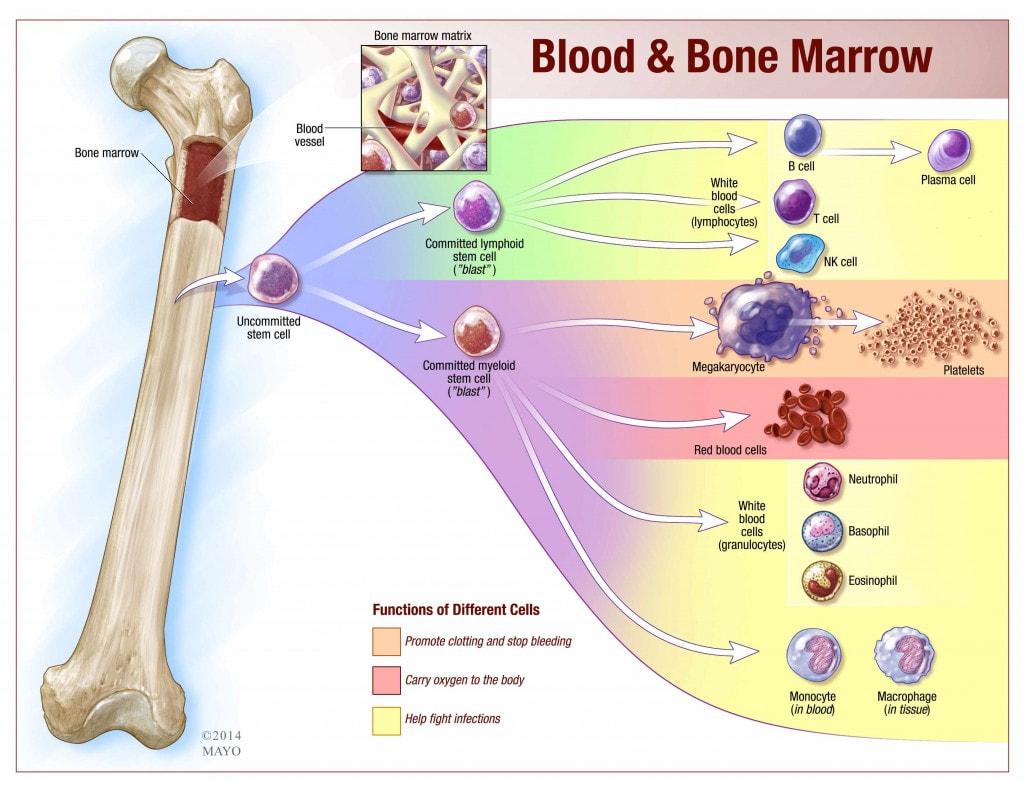 | 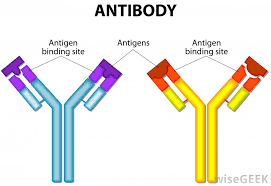 |
6.3.U6 Production of antibodies by lymphocytes in response to particular pathogens gives specific immunity.
- Define “specific immune response.”
- Contrast antigen and antibody.
- Describe the structure and function of antibodies.
- State the function of plasma cells and memory cells.
The immune system must encounter a foreign substance, called an antigen, before it can produce the necessary response to effectively remove the pathogen. An antigen is any foreign molecule found on the surfaces of viruses, bacteria, cancer cells that elicits an immune response. The response by the immune system to the antigen is the production of antibodies. An antibody is a protein found in blood plasma that attaches to a particular antigen to help control its effects. These antibodies are specific to that antigen.
- When a pathogen enters the blood, the specific antigen on the surface of the membrane is identified as being foreign or non-self
- This stimulates a specific immune response in which antibodies are produced that are specific for that particular antigen
- B-lymphocytes are white blood cells that produce antibodies that bind to the antigen on the invading pathogen
- Each lymphocyte is able to produce one type of antibody; however, we have a vast diversity of lymphocytes that are able to respond to millions of foreign antigens
- Once an antigen has been encountered the B-lymphocytes are stimulated to divide to produce a large amounts of clones of themselves (clonal selection)
- The active B-lymphocytes that are produced are called plasma cells which will begin to produce antibodies.
- The plasma cells created, produce and release mass amounts of antibodies into the bloodstream.
- These antibodies surround and bind to the antigens on the foreign pathogens.
- Through a variety of different methods the pathogens are destroyed by the antibodies and other white blood cells.
6.3.U7 Antibiotics block processes that occur in prokaryotic cells but not in eukaryotic cells.
- Define antibiotic.
- Outline the mechanisms by which antibiotics kill bacteria.
Antibiotics are effective against bacteria but not against viruses. Antibiotics block specific pathways found in bacteria. Viruses do not have their own metabolic pathways, therefore, in order to reproduce us to use the metabolic pathways of the cells they infect. Antibiotics are not effective against viruses that have infected human cells because the metabolic pathways are not affected by the antibiotics.
- bacteria have the necessary organelles/enzymes which are useful in many different metabolic pathways
- antibiotics can block specific metabolic pathways found in bacteria
- antibiotics can inhibit enzymes that are used in these pathways and essential to the survival of pathogens (i.e. penicillin inhibits an enzyme that is used in making cell walls)
- antibiotics are ineffective against viruses which reproduce using the host cells metabolic pathways
- antibiotics may harm helpful bacteria that are found in humans
- Explain why antibiotics are ineffective against viruses.
Since viruses lack their own metabolism, they have to use the chemical processes of a cell from a host that they infect
- They are unable to reproduce on their own and cannot perform protein synthesis, transcription and other metabolic functions
- Antibiotics work by blocking these vital processes in bacteria, killing the bacteria, or stopping them from multiplying
- Since viruses do not perform their own metabolic reactions antibiotics such as penicillin and streptomycin, are ineffective in treating viral infections
- Therefore treating viruses with antibiotics is not only useless and ineffective, it can also create antibiotic resistance in bacterial strains eg. Methicillin-resistant Staphylococcus aureus
Antibiotic resistance is an avoidable problem, which can be done by:
- Doctors prescribing antibiotics for only serious cases
- Patients completing courses of antibiotics to eliminate infections completely
- Hospital staff keeping high standards of hygiene to prevent cross-infection
- Pharmaceutical companies not producing new antibiotics
6.3.A1 Causes and consequences of blood clot formation in coronary arteries.
- State the function of the coronary arteries.
- Define coronary thrombosis.
- List sources of arterial damage that increase the risk of coronary thrombosis.
- List factors that are correlated with an increased risk of coronary thrombosis and heart attack.
Coronary arteries are arteries that branch from the aorta and supply oxygen to the heart. Individuals that have coronary heart disease sometimes form blood clots in these arteries. Coronary thrombosis is the formation of a clot within the blood vessels that supply and sustain the heart tissue (coronary arteries)
- If the arteries are blocked, that part of the heart becomes deprived of oxygen and vital nutrients.
- The heart can no longer produce the amount of ATP (through aerobic respiration) needed for the heart to work properly
- The individual is therefore at a high risk of having a possible fatal heart attack
- Atherosclerosis is a disease of the arteries characterized by the deposition of plaques of fatty material on their inner walls.
- The arteries become damaged and coarsened and the wall of the arteries is hardened by calcium salts.
- This blocking of the arteries can lead to a heart attack
Some Causes
- Smoking
- Obesity and lack of exercise
- Hypertension (high blood pressure)
- Diabetes
6.3.A2 Florey and Chain’s experiments to test penicillin on bacterial infections in mice.
- Explain methods and results of Florey and Chain’s experiments.
- A bacteriologist named Alexander Fleming originally discovered Penicillin in 1928
- Later on, two scientists named Florey and Chain were able to develop a method of growing the Penicillin in liquid cultures and purifying the Penicillin in these cultures.
- They started by testing on mice infected with Streptococcus bacteria which would cause death in the mice if left untreated
- Four mice were given Penicillin shots and four were left untreated
- Within one day, all of the untreated mice were dead
- Human trials on five individuals commenced when enough of the penicillin was created. All of these people survived their initial infection; however, a small child died when an artery behind his eye burst
- After this, penicillin became widely produced and used by pharmaceutical companies
- HIV (human immunodeficiency virus) is a retrovirus that causes AIDS, which is a condition in humans where the immune system fails and is susceptible to life-threatening opportunistic infections.
- HIV targets helper-T cells because HIV can bind to the proteins on the T cells.
- Helper-T cells play an important role in the production of clonal B lymphocyte cells, which produce antibodies for immune response.
- Therefore the reduction of T cells will reduce the amount of antibodies produced needed to fight off infection from invading pathogens.
- This inability to fight off disease is what eventually causes the person to die.
Social Impacts
- discrimination and stigma from those around
- abuse and harassment
- may not be able to find work
- may not be healthy enough to work
- expense of medications bankrupts families
- risk of spreading in a family or commuity
- burden of care for the sick
Economic impacts
- working-age population is reduced
- GDP suffers as a result
- more children have to work, so less are in school
- education of nation suffers
- heavy economic burden of medications and care
- international stigma and impacts on trade/industry

